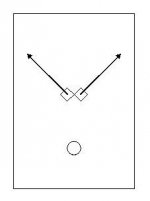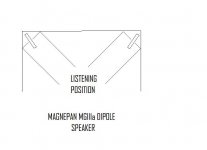You're not the only one. I also haven't seen anything tangible.
DIY! it's easier even than Stereosphere 🙂
Last edited:
Time once again to reinvent the wheel !
Does this have any similarities to Levy, Sioles & Brociner ?
retro vintage modern hi-fi: Rudy Bozak Loudspeakers 1963-1979
😀
P.S. rococo allways nice
- Elias
Does this have any similarities to Levy, Sioles & Brociner ?
retro vintage modern hi-fi: Rudy Bozak Loudspeakers 1963-1979
An externally hosted image should be here but it was not working when we last tested it.
😀
P.S. rococo allways nice
- Elias
Time once again to reinvent the wheel !
Does this have any similarities to Levy, Sioles & Brociner ?
retro vintage modern hi-fi: Rudy Bozak Loudspeakers 1963-1979
Bozak is certainly one of the greats! on the picture with Klipsch 😉
on the other picture the difference I see between Bozak's binaural (haven't seen this before - thanks for the link! 🙂 ) and Levy, Sioles & Brociner's deflector thing
Attachments
and here is another loudspeaker placement idea inspired by stereo sixteen:
http://www.diyaudio.com/forums/full...ectional-fullrange-speaker-4.html#post1536160
and another idea for dipole fans - hey Rudolf! 🙂 - that comes again from Maggies user's circles:
http://www.diyaudio.com/forums/full...ectional-fullrange-speaker-4.html#post1526321
pictures attached
Attachments
and here is another loudspeaker placement idea inspired by stereo sixteen:
What is it? What are the two squares and what are the arrows?
- Elias
What is it? What are the two squares and what are the arrows?
squares are conventional front-firing stereo loudspeakers and arrows show direction and axis of the direct sound - the speakers are placed side by side and the toed out and to the back
with genuine excitement I am looking forward coming descriptions and measurements of Stereosphere that was praised in this thread by Markus
all in the true spirit of diyaudio forum 🙂
all in the true spirit of diyaudio forum 🙂
on the other picture the difference I see between Bozak's binaural (haven't seen this before - thanks for the link! 🙂 ) and Levy, Sioles & Brociner's deflector thing
I think they are more different than similar.
Bozak appears to mimic stereo triangle style presentation because reflections from cabinet doors are aimed to the listener and the width of the cabinet is comparable to the base of stereo triangle so direct sound dominates. Interesting is that with the reflective door one can have more directional pattern aimed to the listener than it would be possible just using a bare driver.
LSB on the other hand tries to prevent the direct sound from reaching the listener so it's a totally opposite style of signal presentation.
The Cardboard with the Pillow is similar to LSB.
However, what is the importance of the width of the LSB cabinet is unknown to me ?? In the pictures they look like at least 1 m or more.
- Elias
However, what is the importance of the width of the LSB cabinet is unknown to me ?? In the pictures they look like at least 1 m or more.
Bozak speaker was around 1 m wide but I haven't seen any pictures of Levy-Sioles-Brociner bipolar speaker but is this really important? After all we are not trying to develop a product - a solution of a one-size-fits-all kind
we can all find our own ways of implementing this bipolar stereo - best suited to our rooms, preferences and available resources 🙂
regards,
graaf
LSB on the other hand tries to prevent the direct sound from reaching the listener so it's a totally opposite style of signal presentation.
The Cardboard with the Pillow is similar to LSB.
Does it really prevent direct sound? I don't think so because of diffraction. What you get is spectrally filtered direct sound. Best case, reflections add spaciousness and restore the spectral balance. The question remains, which polar response is desirable for a bipole center.
Does it really prevent direct sound? I don't think so because of diffraction. What you get is spectrally filtered direct sound.
it's quite obvious for all:
Elias (...) surely a pillow is a low pass filter
can You post any frequency measurements of pillow effect - what part of the spectrum of direct sound is muted and how much?
true spirit of diyaudio forum 🙂

An externally hosted image should be here but it was not working when we last tested it.
[/IMG]
oh well
 anyway! 😀
anyway! 😀have You measured the pillow effect? Questions are how big pillow is really needed and what it really does??
regards!
graaf
I haven't measured the pillow by scientific standards, I could if I would though. It's clear on it's simplicity why it works, the reason seems similar with my experience of too high directive tweeters, namely it disambiguates the high freq cues coming directly from the box which hides it from (unwanted) localisation. High freq range means pinna (again) seems to be dominant here, take into account the cue of turning the head.
On other aspects of The Cardboard I must state that it does not sound good with non natural music. Take some tracks of house music, terrible. Try some tunes of Hed Kandi disco, beyond bearable limit...
But with natural sounds, acoustic instruments recorded in real ambiance, with human voice, it's better than everything else. Strong statement, but true.
- Elias
On other aspects of The Cardboard I must state that it does not sound good with non natural music. Take some tracks of house music, terrible. Try some tunes of Hed Kandi disco, beyond bearable limit...
But with natural sounds, acoustic instruments recorded in real ambiance, with human voice, it's better than everything else. Strong statement, but true.
- Elias
Last edited:
I haven't measured the pillow by scientific standards, I could if I would though.
You wouldn't? why?
so how big pillow is in fact required/sufficient?
On other aspects of The Cardboard I must state that it does not sound good with non natural music. Take some tracks of house music, terrible. Try some tunes of Hed Kandi disco, beyond bearable limit...
even with pillow and into reverberant field? wonder why
Last edited:
The problems of The Cardboard are mainly a boomy monopole bass and bad quality treble of FRS8. Since house and disco is only about bass and treble it's obvious why it fails.
I have plans to reinvent a better system with stereo dipole bass and higher quality side firing drivers. Ongoing.
- Elias
I have plans to reinvent a better system with stereo dipole bass and higher quality side firing drivers. Ongoing.
- Elias
The problems of The Cardboard are mainly a boomy monopole bass and bad quality treble of FRS8. Since house and disco is only about bass and treble it's obvious why it fails.
Do you own a DCX2496? Try to linearize the steady state response with a 12 dB HP.
Last edited:
The problems of The Cardboard are mainly a boomy monopole bass and bad quality treble of FRS8. Since house and disco is only about bass and treble it's obvious why it fails.
ah now I see 😀 well, it's only a cardboard test box 🙂
I have plans to reinvent a better system with stereo dipole bass and higher quality side firing drivers. Ongoing.
before investing time and resources in a better system be sure to check at least those basic alternatives of bipolar stereo box with the carboard 😀
Attachments
- Home
- Loudspeakers
- Multi-Way
- Stereolith Loudspeakers Question






